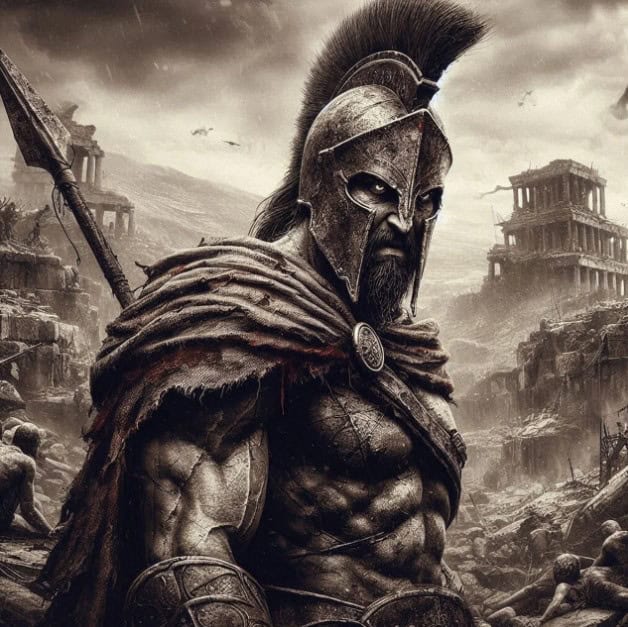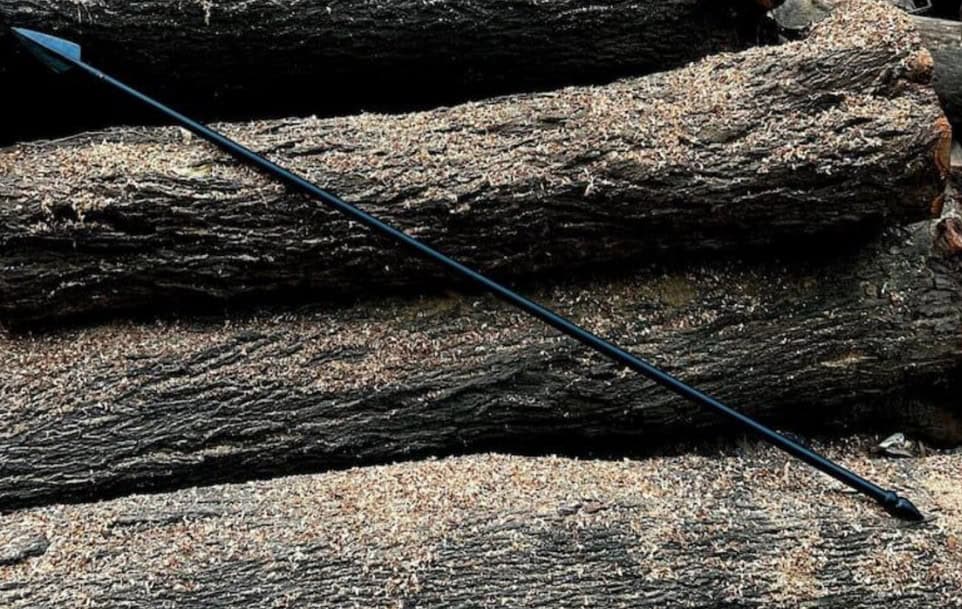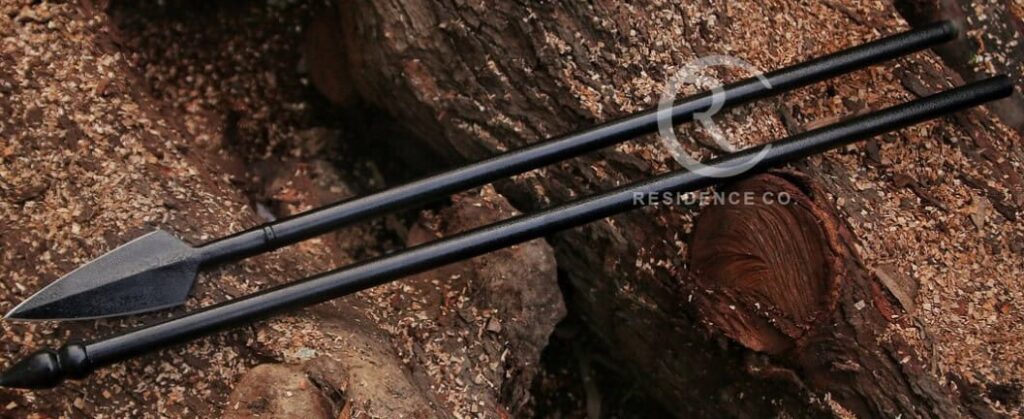What was the Spartan Spear?
TLDR: The Spartan spear, or dory, was a key weapon used by Spartan warriors, known for its long, durable design and crucial role in their phalanx formation during battles.
The Spartan spear, or “dory,” is a fascinating subject that captures the essence of ancient warfare and the Spartan way of life. As I delve into the history and significance of this weapon, I am continually amazed by its pivotal role in shaping the military dominance of Sparta. The dory was not just a tool of war; it was an extension of the Spartan warrior’s identity, embodying the strength and discipline that defined their society.
In ancient warfare, the Spartan spear was a symbol of power and precision. Its design, typically ranging from 2.1 to 2.7 meters in length, was meticulously crafted from cornel or ash wood, chosen for their respective qualities of density and lightness. This attention to detail highlights the Spartans’ commitment to excellence in battle, a commitment that I find both inspiring and formidable.
Historical Context of the Spartan Spear

Exploring the historical context of the Spartan spear immerses me in the captivating world of Spartan society, where militaristic culture was not just a way of life, but the very essence of existence. The Spartans were renowned for their unparalleled discipline and martial prowess, and the spear was central to this identity. It was more than a weapon; it was a symbol of their commitment to excellence and their relentless pursuit of military superiority.
From a young age, Spartan boys were immersed in rigorous training regimes as part of the agoge, a state-sponsored education system designed to mold them into elite warriors. The spear was integral to this training, serving as both a practical tool and a symbol of their warrior ethos. I find it fascinating how the spear was not merely an instrument of war, but a constant companion that shaped their daily routines and honed their skills to perfection. The emphasis on spear training underscores the Spartans’ belief in the importance of discipline and unity, values that resonate deeply with me.
When I consider the use of spears in other Greek city-states, the contrast is striking. While many Greek soldiers, or hoplites, wielded spears, none matched the Spartans in their dedication to mastering this weapon. Other city-states often relied on a mix of citizen-soldiers, whose training paled in comparison to the lifelong preparation of the Spartans. The Athenians, for instance, while formidable in their own right, lacked the singular focus on military excellence that defined Spartan society.
Spartan Spear Design and Features
The Spartan spear typically measured between 2.1 and 2.7 meters in length, striking a perfect balance between reach and maneuverability. This length allowed the Spartan hoplite to engage enemies at a distance, a crucial advantage in the tightly packed phalanx formation. The choice of materials was equally deliberate; the shaft was usually crafted from cornel or ash wood. Cornel wood, known for its density and strength, provided durability, while ash offered a lighter alternative that enhanced the spear’s agility.
Components of the Spear
The dory was composed of several key components, each designed with precision:
- Spearhead: The spearhead was typically made of iron or bronze, shaped into a leaf-like point that could penetrate armor and shields with ease. Its design was both elegant and deadly, a testament to the Spartans’ focus on functionality.
- Butt Spike (Sauroter): Opposite the spearhead was the sauroter, or “lizard killer,” a butt spike that served multiple purposes. It provided balance to the spear, allowing it to be wielded with remarkable precision. Additionally, it could be used as a secondary weapon if the main spearhead was damaged or lost.
Design Advantages
The balance and design of the Spartan spear offered several advantages in combat:
- Reach and Control: The length of the spear allowed for extended reach, enabling Spartans to strike from a distance while maintaining control over their weapon.
- Versatility: The dual-ended design, with both a spearhead and a butt spike, offered versatility in battle scenarios, allowing warriors to adapt quickly to changing circumstances.
- Durability: The choice of materials ensured that the spear could withstand the rigors of battle, providing reliability that was crucial for the Spartan phalanx.
Usage in Warfare
The dory was not just a weapon; it was a central element in the tactical brilliance that defined Spartan warfare, and its role in battle never ceases to captivate me.

Tactics Involving the Spartan Spear
The Spartan spear was integral to the phalanx formation, a tactical arrangement that epitomized the discipline and cohesion of Spartan warriors. In this formation, hoplites stood shoulder to shoulder, their shields overlapping to create an impenetrable wall of defense. The spears, held at various angles, extended outward like a bristling hedge of iron, ready to repel any foe.
Key tactics included:
- Defensive Wall: The phalanx served as a mobile fortress, using the spears to keep enemies at bay while maintaining a solid defensive line.
- Offensive Push: At the right moment, the Spartans could advance in unison, using the weight and momentum of the formation to break enemy lines.
- Flexibility: Despite its apparent rigidity, the phalanx could adapt to different terrains and enemy tactics, demonstrating the versatility of the Spartan spear.
Famous Battles
The Spartan spear’s effectiveness was showcased in numerous battles, but none more famously than the Battle of Thermopylae. Here, a small force of Spartans, led by King Leonidas, held off a vastly larger Persian army. The narrow pass of Thermopylae was ideal for the phalanx, allowing the Spartans to maximize the reach and impact of their spears. This battle exemplifies the strategic genius of the Spartans and the pivotal role of the dory.
Effectiveness in the Phalanx Formation
The phalanx was a marvel of military engineering, and the spear was its linchpin. The effectiveness of this formation lay in its:
- Cohesion: The tight-knit arrangement required each warrior to trust and rely on his comrades, a testament to the unity and discipline of Spartan society.
- Reach and Power: The spears provided both offensive and defensive capabilities, allowing the phalanx to dominate the battlefield.
- Psychological Impact: The sight of a well-ordered phalanx advancing with spears at the ready was often enough to intimidate and demoralize opponents.
Where Can I Get My Own Spartan Spear?
If you’re looking to own a Spartan spear, you can find replicas online through specialty retailers that offer historically accurate designs, often crafted from materials similar to those used in ancient times, perfect for display or reenactment purposes.
CloudyskyGoods

MrKnifeShope

Tranzocrafts

GreenVenturesLLC

ResidenceCo

Final Thoughts
The Spartan spear, or dory, is a prime example of how ancient civilizations developed innovative tools for warfare. When you consider the evolution of weaponry over the centuries, it’s amazing to see how some of the most impressive historical arms have left their mark on culture and tactics alike.
